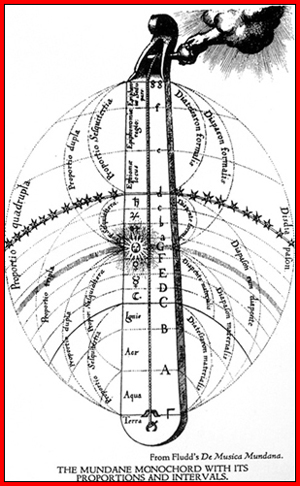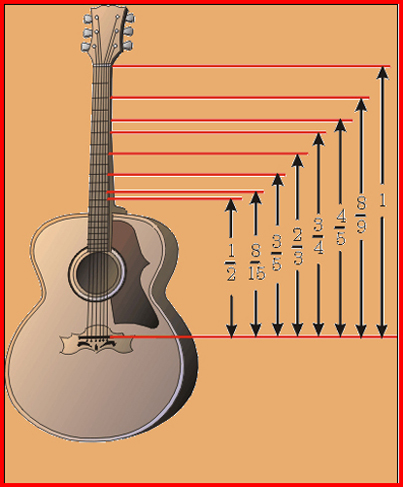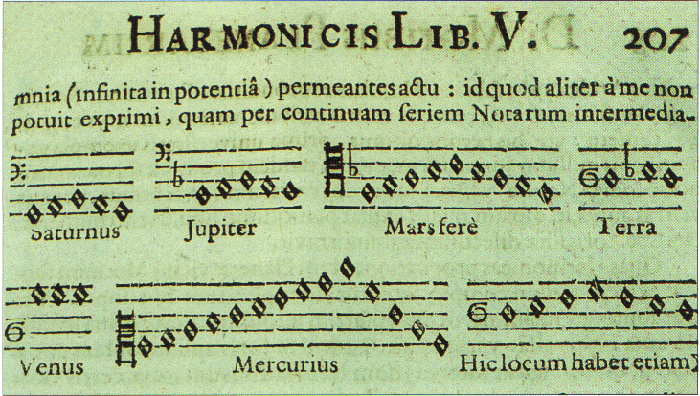|

Are
our windows on reality simply reflections of ourselves, or is that just
getting in the way of the larger, deeper landscape?
...Through
a glass, darkly
By
John Townley
“For
we know in
part, and we
prophesy in part. But when that which is perfect is come, then that
which is in
part shall be done away.
When I was a child, I
spake as a
child, I understood as a child, I thought as a child: but when I became
a man,
I put away childish things.
For now we see through a
glass,
darkly; but then face to face: now I know in part; but then shall I
know even
as also I am known.” –
I Corinthians 13
There
is a common
conceit among
astrologers aching to fit in with the modern world that there is
nothing
factual here, only mythological – nothing
actual, simply shifting personal truths
garbed in old symbolism
looking for new clothing. Some would go so far as to say there is no
truth at
all in astrological correlations except what we project ourselves, our
own
reality. It’s the self-absorbed question if a tree falls in
the
forest and no
one hears, does it make a sound – asked by someone living in
a
wooden house,
made of fallen trees.…not to mention
Schroedinger’s cat
howling in the
microwave…
This
twentieth-century
approach
is sadly distant from anything that has previously passed for astrology
since
the discipline began. Astrology has always viewed itself as an approach
to a
real description of what actually goes on in the universe, not as mere
fancy,
and that its proponents should have given up in the face of a passing
view of science
born primarily out of the laboratory and not environmental observation
is a
sorry tale, indeed. One would think, from reading current astrological
psycho-babblings, that modern psychology and the speculations of
quantum theory
somehow predated the planetary rhythms that have driven the formation
of
evolution and not the other way around. It’s as if had we not
noticed it, like
the tree in the forest, it wouldn’t have happened without us.
Fortunately,
as
scientific
thought itself evolves and matures, we are beginning to notice the
larger
picture, the integration of multiple systems and supersystems, the
scaling of
organisms and superorganisms, that make up our ourselves and our
environmental
matrix – and the more it does, the more it looks like
astrology.
Not modern
“psychological” astrology, either, but the good old
kind of
Pythagoras, Kepler,
Fludd, and other universalist thinkers who so long ago were on the
trail of a
“theory of everything” despite lacking some of the
observational tools that
were to come later. When those tools first arrived (the technological
array of devices
that allow us to see the super-small, the super-large, various waves,
fields, and
all kinds of previously invisible worlds), they took over and were
mistaken for
answers in themselves. We began to think our new windows on the world
were the world itself and that they only got there because of us. But
that’s beginning to change as we stand
back and peer
through the mulitiply-scaled outer and inner windowpanes which both
reveal and
reflect back the universe we share.
  The Pythagorean view sees
all things large
and small as an integrated set of proportional resonances, like a tuned
instrument. The Pythagorean view sees
all things large
and small as an integrated set of proportional resonances, like a tuned
instrument.
One
of the consistent
themes of
astrology across the ages has been the reflection of one sizing of the
world to
the next – from heaven to earth, from the large to the small,
and
vice-versa –
and recent discoveries about universal similitude (now we call it
fractals, the self-similarity of scales)
leads us back to the same “worlds within worlds”
view. Here
are some subsets:
Sound:
The
universe was once seen as a large, resonant musical entity right after
Pythagoras discovered the fundamental relationships of temporal
acoustic
cycles, which determine musical pitch. As a general
approach to sound and light
it became a major part of
astrological
thinking, right through the Renaissance (as in Fludd’s
diagram
above left), which brought
back the Classical ideas about it, many of which were explored and
extended by
Kepler in his Harmonices
Mundi.
A
central key to the idea is that each time a vibration rate doubles
(moving an
octave higher) it becomes basically the same to the ear, a repeat
performance
on a different level. In music that principle works consistently,
though
approximately (different cultures hear the variations slightly
differently). At
different proportionate ratios of vibration, the basic intervals of the
scale
are produced, starting with the fifth, fourth, and major and minor
thirds.
Light:
And,
if you take it
through
higher cycles-per-second you find that you eventually reach the
almost-octave-wide
band of visible light. In between are a variety of now-useful
frequencies
(radio, microwave, lots more) that biological evolution
didn’t
need to give us
receptors for, despite their fundamental importance, without our
notice, in the
rest of the universe. Basically, we’re not wired to know what
we
don’t need to
know to survive, so far. On the other hand, we seem to be quite keyed
in to the
rhythms that match our height and size, revealed with much more to
speculate
about in this
Wiki
article.
The
Basic Track:
In
addition, on the lower and slower side, we have only recently
discovered the
importance of lower frequency waves that we don't notice but that
elephants and whales can
understand
and use to communicate with. But more important, at much lower
frequencies we
are
compelled and propelled by the beats that measure not in cycles per
second but
in cycles per day, month, year, century, and beyond, the pulsing cycle
frequencies of the earth on its axis, the Moon, the Sun, and the other
planets
we are locked into mutual resonance with gravitationally –
and
whose frequencies sort
themselves out into the very same octaves, fourths, and fifth
relationships
that we notice in music. These are the lower fundamentals, which are
below the
bottom line we generally recognize in our faster pace, but are the
basic
resonant frequencies which are beneath our normal range of considered
perception. We know they are there, but we don’t often look
at or
accept them
as participants in our own lives, part of our own basic ongoing
structure, as did astrologers of yore who conceived of existence as an
integrated whole, despite having fewer windows on it than we do. Yet,
there they
are, the bottom drivers, the real
bass players
in our cosmic band, beating out the rhythms of
generations, of civilizations, the basic track of evolution itself.
 Planetary
Ratios and Resonances
For
more fun, just dive
in further to revel in the details. Recent measurements of
distant objects in space suggest they are giving off various kinds of
waves at
very low frequencies corresponding to “cosmic
music”
according to some fanciful
astronomers, including a black hole emanating the lowest
B-flat
in the universe. Although
there
may be a big B-flat coming from afar, there may be a much more local
reason for
C being so central as the home tone here on earth. If you take the
earth's
yearly cycle, 365.2422 days, convert it to seconds and then start
dividing it
by two to reduce it to shorter octave cycles all the way to audible Hz,
you
eventually reach .003637097...or just 272 Hz, just between
tempered C and
C# if A=440.
True C2
is 264 Hz, or
expressed in a decimal fraction of a
second, .0037878787...just the tiniest bit flat of the earth's
tuning.
Tempered
C2 is 261.626
Hz, .003822500, the tiniest bit
flatter still.
So, the
earth's own
frequency might appear to be
somewhere between C and C# (and if you use A=444, it's closer still to
true C)
After
discovering the
"pitch" of earth, a little
above C, it’s worth calculating the rest of the planets.
Quite
curiously, Venus
(most associated with music) is smack on A at just 442 Hz...
Of the
rest, the
inner and outermost planets
Mercury and Pluto are multiple octaves of each other at just above C#,
and all
put together the tones E, F, G, Bb, B, Eb are lacking. Here's
the
list,
all compressed to the same octave, although some others (like Mars and
Saturn) are
actually also octaves or so apart:
Earth =
272 = C a trifle
sharp
Mercury = 282.5 = C# a trifle sharp
Venus = 221.22, or 442.44 = A
Mars = 289.44 = D a trifle flat
Jupiter = 367.15 = F#
Saturn = 295.69 = D
Uranus = 414.71 = G#
Neptune = 422.86 = G# a trifle sharp
Pluto = 281.34 = C# a trifle sharp
What’s
mainly
interesting is that the ratios of all the
planet cycles are very Pythagorean, indeed, and seem to put them in
distinct
“musical” families, not surprising after eons of
settling
into their mutually resonant
orbits. Here’s a fun
recent
musical
attempt
to turn them into audible sound, and on the
astrological side,
here’s a sign-house-planet
linkup
with the natural circle of fifths which is actually a
practical
songwriting tool.
Transmissions
and Reflections
All of
these different
scalings
of the structure of the universe exist without our ever noticing them,
as trees
that fall in the forest and make their own sounds, most of which we
aren’t even
privy to. But our own survival has necessitated our having evolved
cognizance
of some of them and the ability to connect them from scale to scale as
their
similarities strike us – in language and metaphor, in
science,
and in the arts.
They are windows through which we see part of the structure beyond us
but which are
also
self-reflections, and ofttimes it is hard to distinguish which is which
– what
is actually ahead and what is just an interior reflection of ourselves
or in
fact behind us. The crystal delineation of Uranus mixes with the
elusiveness of
Neptune, ever shifting from scale to scale, outward to inward, forward
to
backward, the dynamic balance that ensures our continuation but denies
final
certitude,
since we don’t and cannot see the whole picture, only its
shifting analogues
and analogies. Still young on the vine, we just don’t have a
ripe
view yet, so
perhaps St. Paul had it right in I Corinthians 13, which is about both
mirrors
and windows, the temporary and final pictures, and worth a look
at the original Greek.

So we
determine who we
are by what
we see, and judge what we see by who we are, in a continuous round of
rescaling
and re-recognition, through a glass darkly, by definition not ever in
individual existence face to face. In the mirror, all else changes
except the
fixed but illusory
relation to our own image.
But underneath, the planetary beat
goes on,
and we dance without completely knowing
why…but then perhaps that’s
not
necessary…
Persona
Who are
you? the thought
comes to my mind
That I might know you by some other name
Than what you told me or that I might find
Some other person not at all the same
Were I to name you just by what you see
Within your mirror when you wonder who
Looks back at you, or looking back at me
You ask the very question I ask you
Like who are we when we are what we claim
To be, or should the vagrant thought arise,
Is seeing you the same as seeing me,
And who is left there when we close our eyes
To thoughts that mirrors so succinctly show
Us nothing that we don't already know.
For
more astrological thoughts on how it’s all physically
put together, something more astrologers should be attending to, check
out our
own Moon
On Deck
and David
Roell’s recent take
as well.
Update 9/23/09: Drum Notes...
Drum
notes? Indeed.
It turns
out, on reflection, that
if your drummer winds up and plays fast enough he might be playing your
alto
line. If you take a 3 over 4
beat (like 60 beats per minute together with 80) and double them until
you get
up to the tonal range, you get a natural fifth, and so on with other
syncopations, which actually produce melody and chords when speeded up.
In
other words, when you raise the rhythm track to the next recognizable
higher
scale, you get melody and harmony, and the reverse as well. So, the
principle
of proportionate scaling even applies twice within segments of the
audible audio range
itself. Not something the average instrumentalists considers, but you
could probably compose with it with the right software.
And now,
in a recent article in New
Scientist magazine called Winners
Wear Red,
science has done another set of experiments to prove
the
obvious: that lower-spectrum colors (like red) are more noticeable,
have more
impact, and seem more threatening than higher-spectrum colors (like
blue) which
are associated with more delicate and intellectual feelings. The lower
sets the
pace and forces the demands, the higher shapes and filigrees the
details of
where it’s proceeding. That’s a principle that
applies in
music as well (bass
track drives and structures the mid and treble melody and harmonies,
and the
rhythm track many octaves below (as we now have noticed) drives the
entirety of the
melody sections both bass and treble. So, too, the lower-frequency
outer
planets are the traditional drivers of social change, while the middle
and
inner planets paint what’s happening in the shorter-range
details, particularly
among individuals, who are in turn caught up and driven by the larger,
lower-frequency picture.
It’s
the same the whole world (or
universe) over. That's on the macro and mesoscales. On the microscale
(not to mention the nanoscale) one wonders what tunes the microbes are
humming, and what
relatively (to us) mini-beats are setting their tiny toes to
tapping…
More
on this same subject in follow-up
article Many
Rainbows...
Not
a
newsletter subscriber already? Subscribe
Free Here!
--
Breaking news from
around the globe, plus articles, reviews, it's all happening there,
changes daily...
|

